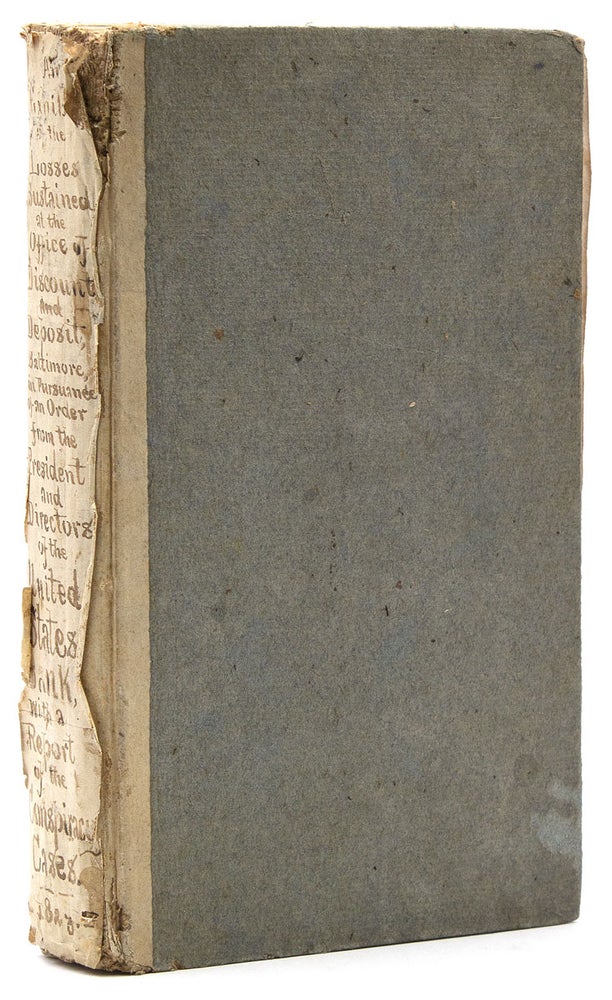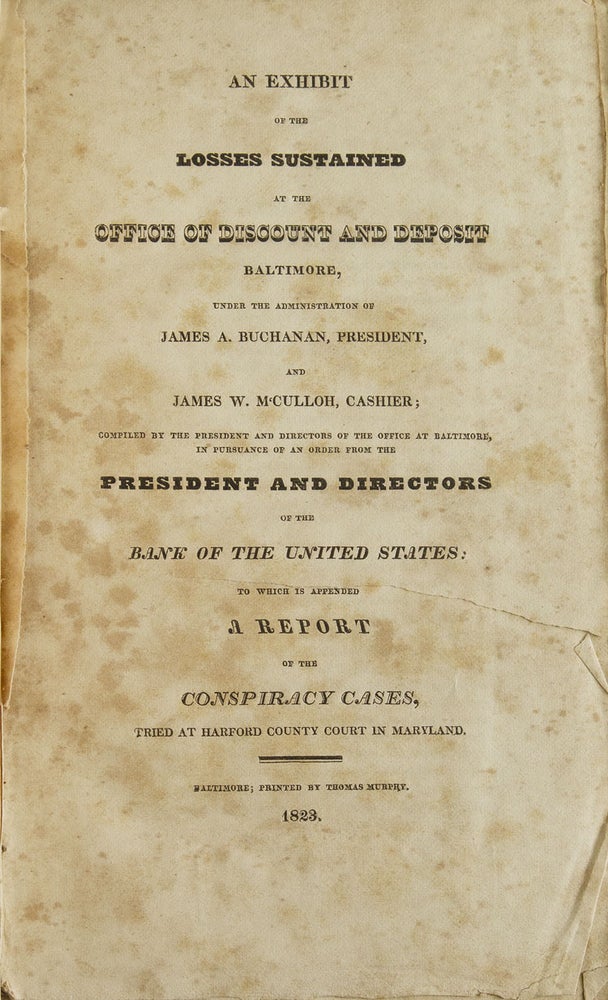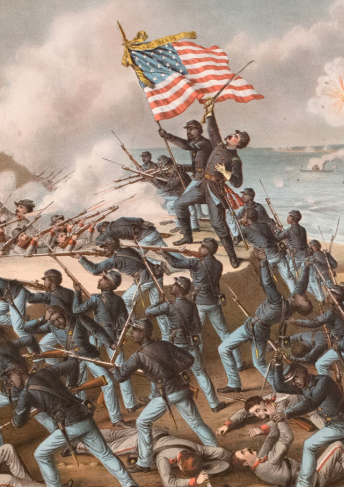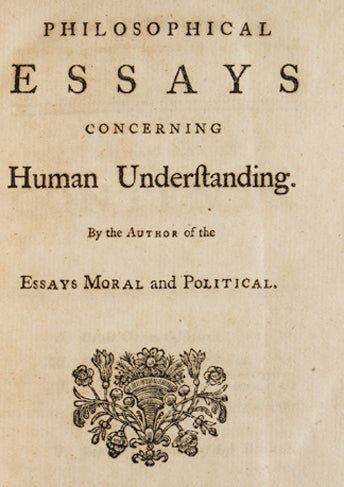An Exhibit of the Losses Sustained at the Office of Discount and Deposit Baltimore, under the Administration of James A. Buchanan, President, and James W. M'Culloh, Cashier; Compiled by the ... President and Directors of the Bank of the United States.
Baltimore: Thomas Murphy, 1823.
Price: $950.00
About the item
First edition. 28, xix, 280, 118pp. Folding tables. Uncut. 8vo. Publisher's paper-backed blue boards, early manuscript titling on the spine. Title page torn without loss, foxing. Sabin 23396; Shaw and Shoemaker 12485.
Item #319699
The establishment of the Second Bank of the United States in 1816 prompted immediate distrust of the institution, with opponents charging it as constitutionally illegitimate and a direct threat to Jeffersonian agrarianism. With more local banks than any other state, Maryland faced an unprecedented demand on specie from out-of-state banks and thus passed a bill calling for a tax on bank notes not issued by banks chartered within the state. The only such bank was the Baltimore branch of the Bank of the U.S. The cashier of the Baltimore Bank of the U.S. refused to pay the tax and the ensuing lawsuit would eventually make its way to the Supreme Court, leading to the monumental decision in McCulloh v Maryland which held that the State could not tax a branch of the United States Bank and affirmed federal powers not delineated within the Constitution.
Anti-banking prosecutors in Maryland, however, did not take the defeat in the Supreme Court lightly. Instead, they indicted McCulloh and the President of the Baltimore bank of the U.S. James A. Buchanan (1768-1840; not to be confused with the U.S. President) on conspiracy charges relating to 3 million dollars in loans that Buchanan and McColloh had extended to themselves and friends without proper collateral and without informing the directors of the parent Bank of the U.S.
This scarce work comprises the reports, indictments and evidence presented on the banking conspiracy cases brought against Buchanan and McCulloh, published by the Directors of the Bank of the U.S. as part of their attempt to recuperate losses and address public .
Scarce, with only a single example in the auction records in the last quarter century.





